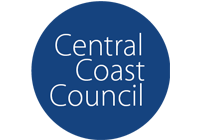Wyong Ward
Housing tenure
In Wyong Ward, 65% of households were purchasing or fully owned their home, 22.9% were renting privately, and 4.6% were in social housing in 2021.
Wyong Ward's Housing Tenure data provides insights into its socio-economic status as well as the role it plays in the housing market. For example, a high concentration of private renters may indicate a transient area attractive to young singles and couples, while a concentration of home owners indicates a more settled area with mature families and empty-nesters (Household Summary). Tenure can also reflect built form (Dwelling Type), with a significantly higher share of renters in high density housing and a substantially larger proportion of home-owners in separate houses, although this is not always the case.
In conjunction with other socio-economic status indicators in Wyong Ward, Tenure data is useful for analysing housing markets, housing affordability and identifying public housing areas.
Further reading: How can Councils influence affordable housing.
Derived from the Census questions:
'Is this dwelling (owned outright, owned with a mortgage etc.)', and 'If this dwelling is being rented, who is it rented from?'
Households
Source: Australian Bureau of Statistics, Census of Population and Housing (opens a new window) 2006 and 2021. Compiled and presented by .id (opens a new window)(informed decisions).
(Enumerated data)

Compiled and presented in profile.id by .id (informed decisions).

Compiled and presented in profile.id by .id (informed decisions).
Dominant groups
Analysis of the housing tenure of households of Wyong Ward in 2021 compared to Narara Valley and Ourimbah shows that there was a similar proportion of households who owned their dwelling; a smaller proportion purchasing their dwelling; and a larger proportion who were renters.
Overall, 28.2% of households owned their dwelling; 36.3% were purchasing, and 27.7% were renting, compared with 28.7%, 39.7% and 24.2% respectively for Narara Valley and Ourimbah.
Emerging groups
The largest changes in housing tenure categories for the households in Wyong Ward between 2006 and 2021 were:
- Renting - Private (+2,320 households)
- Mortgage (+1,872 households)
- Fully owned (+1,104 households)
- Other tenure type (+228 households)
The total number of households in Wyong Ward increased by 6,063 between 2006 and 2021.
